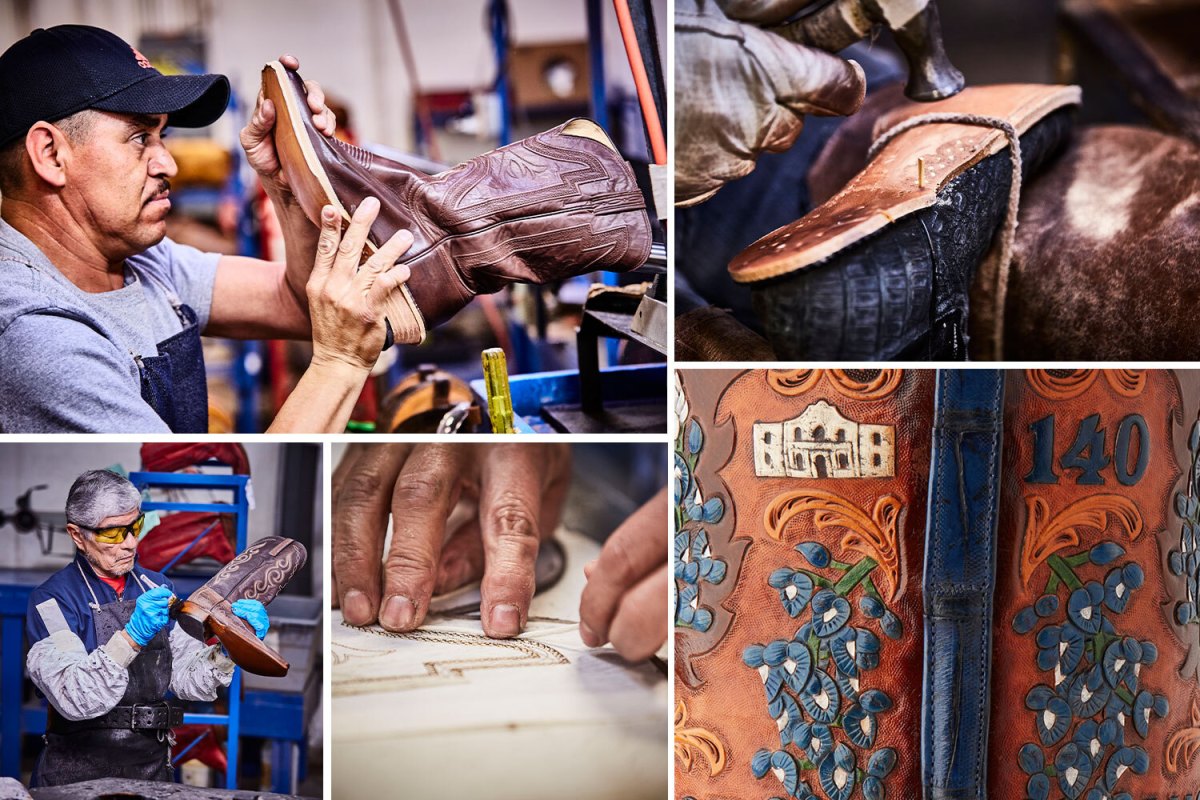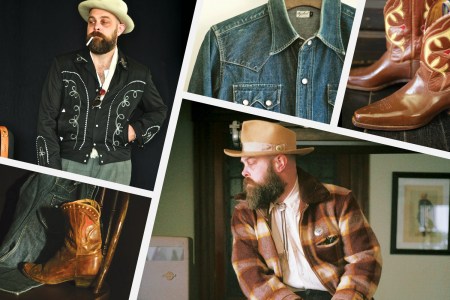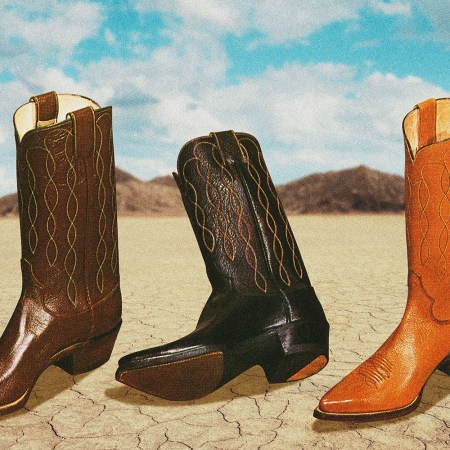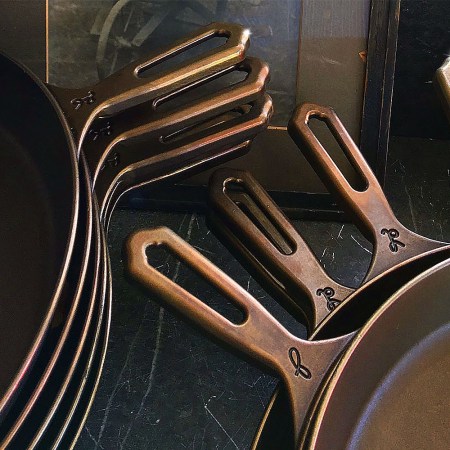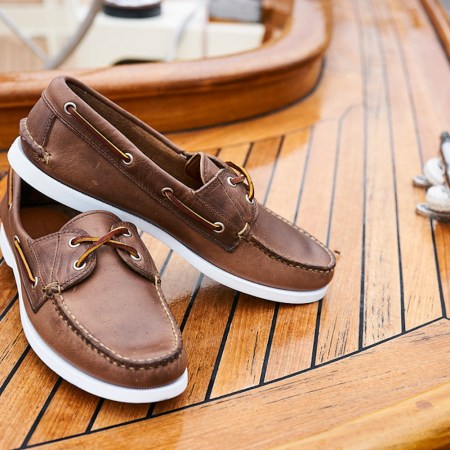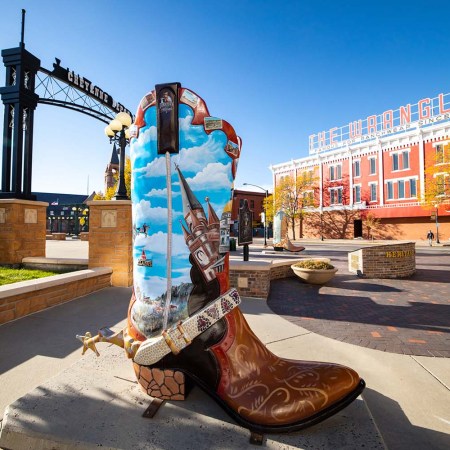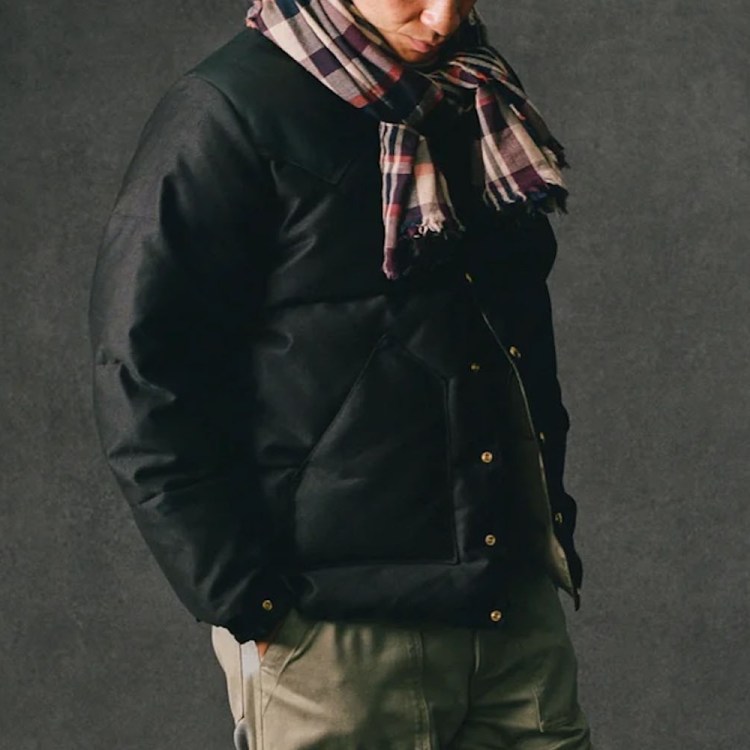One of my best friends has been on the hunt for the perfect broken-in pair of cowboy boots for quite some time. Earlier this year, we were walking together in Manhattan, and she was gushing about her adoration of the style.
“It’s really the perfect shoe,” she said. “You can wear them in the fields, horseback riding, in the snow, out to dinner in New York — what other shoe can do that?”
I guess I’d never thought about it. Hey, I love a Western look. I own my fair share of snakeskin, bolo ties and suede fringed jackets. I wore a cowboy hat to my eighth grade dance and had a fuzzy blue steering-wheel cover embroidered with metallic silver lassos in high school. But cowboy boots — they never felt like me. I always thought they were either too rugged, made for someone who’s an actual cowboy, or too diluted, a fast-fashion thrill that feels trite and inauthentic.
“What I’m really looking for is a pair of pre-owned Luccheses,” my friend continued. “Have you heard of them? The brand originally made boots for the Texas Cavalry and they outfit the Dallas Cowboys cheerleaders. They’re iconic.”
I hadn’t heard of the brand before our conversation, but as soon as I got home, I Googled them. “Wow,” I texted her the next day. “I’m obsessed.”
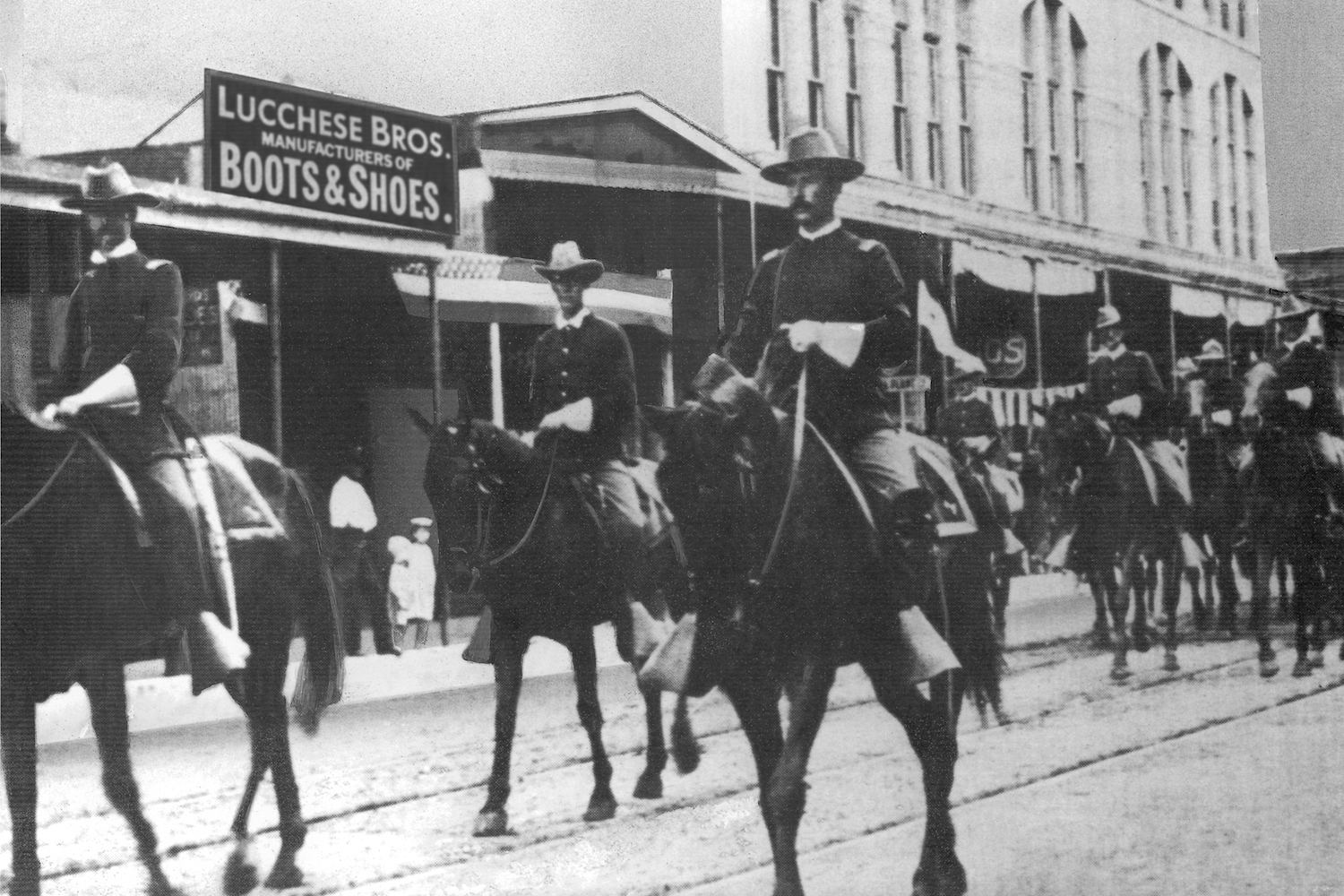
Two Immigrants and the American Dream
Salvatore and Joseph Lucchese were born in Palermo, Sicily, and immigrated to the United States in 1882. Their ship reportedly arrived in Galveston, Texas, and in 1883, they made the move to San Antonio. “They set up a little shop there in San Antonio and just began leather repair,” says Trey Gilmore, Lucchese’s director of product development and men’s design, who I spoke to at both a press preview and during a phone interview last month. “They came from a long line of craftsmen and cobblers. That’s where it all started.”
The Lucchese brothers got their big break when they were approached by the Texas Cavalry to produce their boots, and word traveled quickly. “Those are the folks who actually helped build our brand in the late 1800s and spread the word across the frontier,” Gilmore says. “Before long, we had cowboys showing up on the front doorstep with a worn out pair of boots and their tongue hanging out, needing something new on their feet. And then those guys took out across the frontier, driving cattle north up the Chisholm Trail to market. Word throughout the cowboy arena spreads like wildfire.”
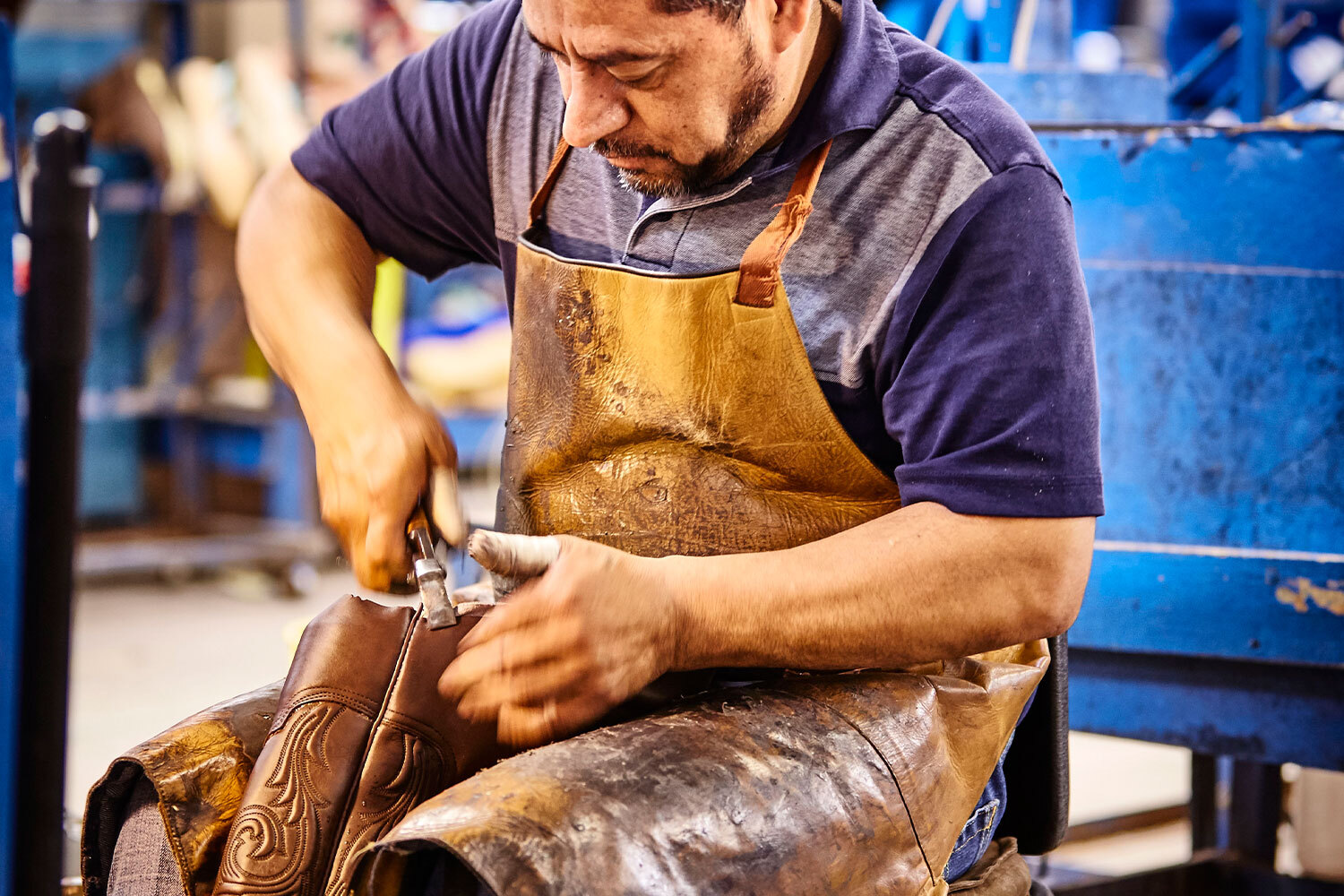
One Pair of Boots, 150 Pairs of Hands
Every single one of Lucchese’s boots is handmade. Every single one. How many brands can say that? “Upwards of 150 pairs of hands will touch every pair of boots that go through the process, from cutting to stitching to tooling,” Gilmore says. “It’s truly amazing to have so much handwork and stay true to the way we’ve always built these boots, down to our hand-pegging process where we drive one peg at a time, and upwards of 35 or 40 pegs in each boot. The time and effort and detail that goes into every pair is astounding.”
While traditional suede and leather are certainly options at Lucchese, the exotics are where they really shine. “Ostrich, alligator and crocodile — these are skins that have been used to make leather goods and footwear, particularly cowboy boots, for decades and decades,” Gilmore says. “As in most products we consume, there are multiple different levels of quality, time and effort that goes into them. I just returned from [trade show] Lineapelle in Milan last month looking at leathers and sourcing. We go around the globe to get the very best.”
There’s no doubt that Luccheses are beautiful to look at, and you can feel that the materials are superior. During a visit to the Denver store in October, I was amazed at how soft the ostrich leather is to the touch — I’d never really felt anything like it. But perhaps how they fit is even more impressive than how they feel.
I don’t know about you, but I look at a pair of knee-high boots with no side zipper and think, This thing is not going on without a fight. Not Lucchese. I pulled on the best-selling Priscilla boots with ease (in my regular size, no less), no shoehorn required. It came off just as effortlessly. It’s one of the things that sets them apart from other shoemakers.
“Third-generation Texan Lucchese, Sam Jr., actually studied the anatomy and structure of the human foot and how those metatarsal bones reacted to pressure when a person stood up on their feet, and that’s how he designed our twisted cone last that we still use today,” Gilmore explains, the “last” being a foot-shaped mold used to construct shoes. “Those boots that you tried on are made on that last. It’s certainly one of the pillars that holds us sturdy — our fit and our last.”
Go West, Young Man, But Not Too Far: How to Pull Off Western Wear
Incorporate pearl snaps and Western boots into your own wardrobe without going full Marlboro ManShapers, Crafters and Storytellers
Brand collaborations are everywhere these days. Sometimes the partnership seems like two peas in a pod, born of the same aesthetic and meant to be together. Other times they’re not as thoughtful or well done, seemingly thrown together only to create buzz. Lucchese is definitely of the former mindset, as they only work with people and brands that share their ethos. And while they differ in aesthetic from partnership to partnership — from people like hat designer Nick Fouquet to musician Chris Stapleton, and brands from Ralph Lauren to Wrangler — each fits three main criteria.
“Shapers, crafters and storytellers — it’s kind of a filter for us to go out and define how we work and who we work with,” says VP of Brand Communications and the Creative Suite Austin Ripmaster. “For example, we are the official boot of the University of Texas Longhorns and the Texas A&M Aggies — these are universities that are helping shape the future of the West. Crafters are artists, builders and makers, like Nick Fouquet who’s crafting the next generation of cowboy hats. Storytellers speaks for itself. We have a really long history of engaging with musicians and cowboy poetry and storytellers of all different kinds of mediums. Someone like Chris Stapleton is a performer, but really he’s a songwriter at his core. He’s worked with everybody from George Strait to Morgan Wallen. Are you helping to shape the future and craft the Western identity? That’s been a really important evolution in how we work with different partners.”
These partnerships, of course, also create buzz. The boot that really got me into Lucchese was the women’s version of the White Sands, one of the pairs that was designed in partnership with Fouquet. They were sold out in my size by the time I saw them. During my visit to the Denver store, I was attracted to a gorgeous men’s denim jacket that was made in partnership with Wrangler. Store manager Alonzo Sandoval told me the collection was crafted with Cone Mills White Oak selvedge denim, which was the last remaining U.S. selvedge denim mill before it closed in 2017. “When those bolts of fabric are used up, that’s it,” Sandoval says. Lucchese boots are already special because of how they’re made, but these one-off projects produce especially exceptional pieces.
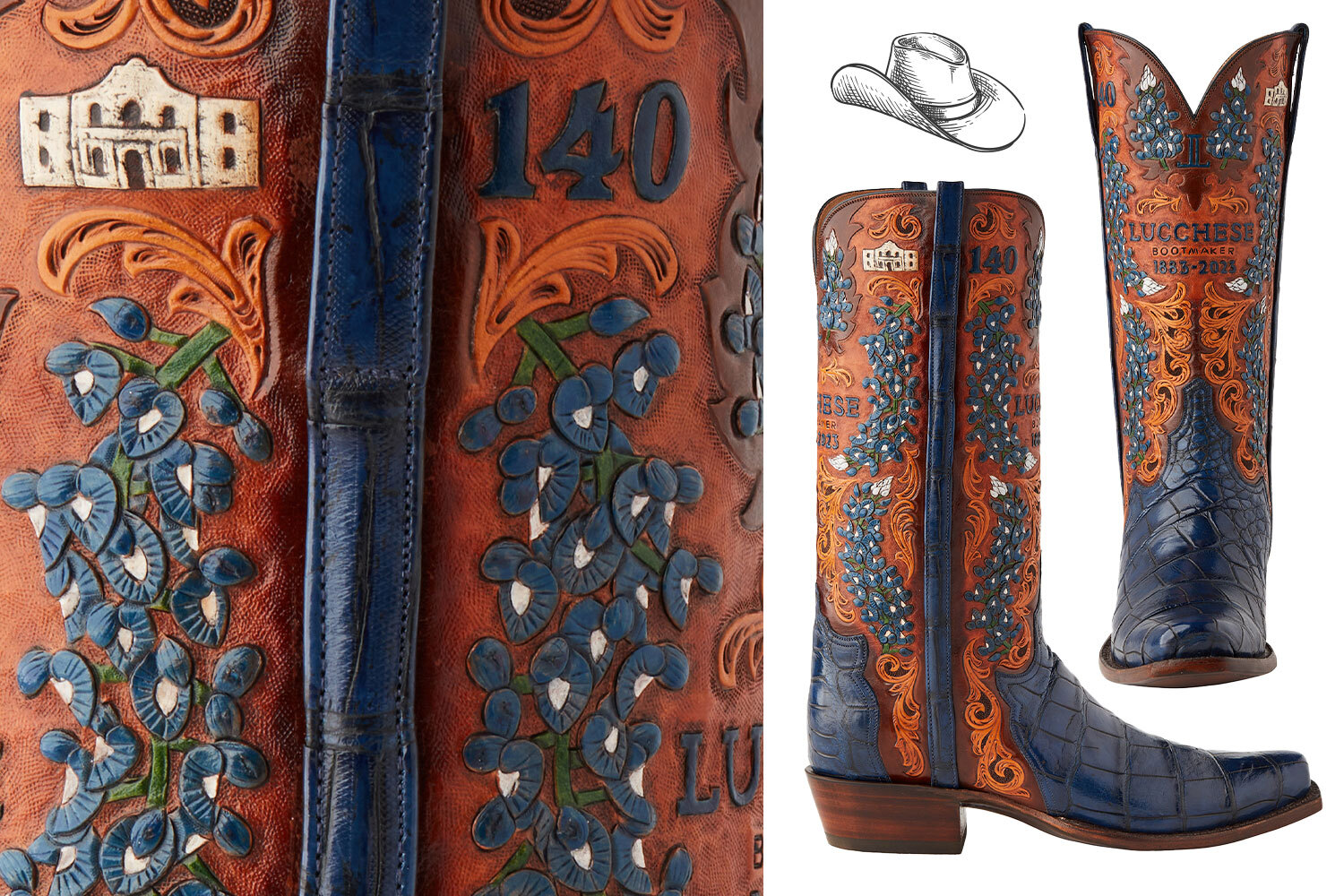
Still for Cowboys, Also for Office Workers
Cone Mills was an American icon, but even something as popular and American as denim couldn’t survive a new century after 112 years in business, citing a lack of orders as the reason it folded. “How many brands and businesses can you count that are American made, immigrant founded, still doing things the old way, successful in business and privately owned 140 years later?” Ripmaster says. “I mean, [Lucchese] is quite simply the American unicorn in a lot of ways. It’s the quintessential success story.”
The brand decided to celebrate this milestone with an anniversary boot — an absolutely stunning piece made from Giant Alligator leather, hand-tooled and hand-painted with bluebonnets (the Texas state flower) and Alamo details, priced at an eye-watering $15,995. But I was curious to know, with all of the Texas symbols out there, why the bluebonnet?
“The flower itself, not only does it bloom so beautifully, which speaks to the craft and the artistic component, but it has deep roots, which speaks to the generational side of our business,” Ripmaster says. “This flower will grow regardless of whether or not it’s exposed to a tornado, record-level heat or unusual snow storms. It has deep roots, grows and blooms consistently every year, and yields something that is at the same time tough but also beautiful. It became a no-brainer.”
Maybe you grew up wearing cowboy boots, whether for fashion or utilitarian purposes. Maybe you’re obsessed with American history or simply started watching Yellowstone recently and have a newfound fascination for Western culture. Trends and TV shows come and go, but for a lot of people, the idea of the frontier is forever. “A lot of our customers are working cowboys or in ranching,” Ripmaster says. “But as we move into a more contemporary kind of urbanized world, the notion of what it is to be a cowboy is different. It’s now more of a spiritual thing, more of a mentality thing.”
“We all have a little piece of the American West inside of our heart,” Gilmore says. As for me, I’m convinced to start wearing it on my feet, too.
This article appeared in an InsideHook newsletter. Sign up for free to get more on travel, wellness, style, drinking, and culture.
